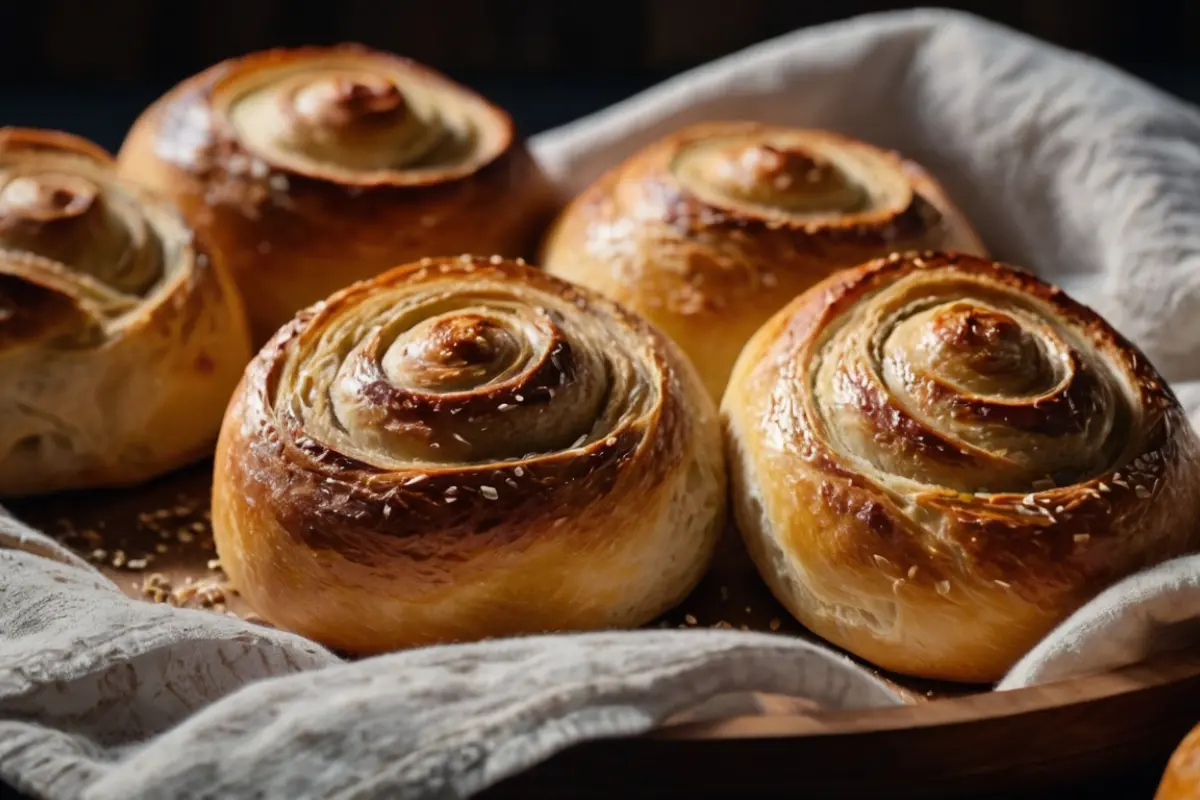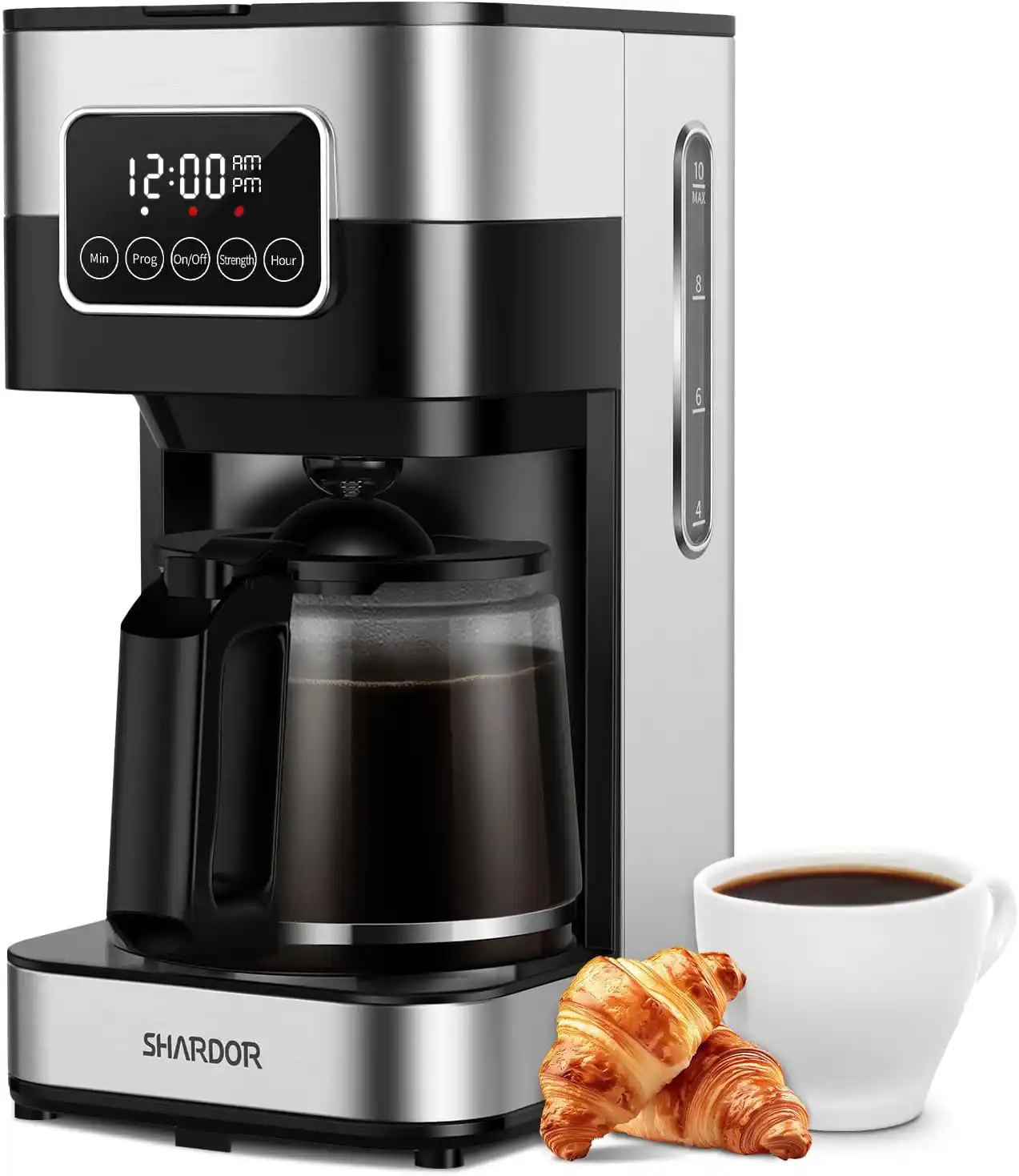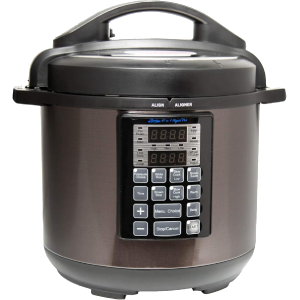Recipe sourdough rolls are a delightful addition to any meal. Whether you’re serving them with soup, making sandwiches, or just enjoying them with butter, there’s something special about the tangy flavor and chewy texture of homemade sourdough. If you’ve ever wanted to master the art of making sourdough rolls at home, this guide is for you.
In this detailed article, we’ll take you through every step of the process, from preparing the starter to baking the perfect rolls.
The History of Sourdough
Sourdough bread has a rich history that dates back thousands of years. It’s believed that sourdough was first developed in Ancient Egypt around 1500 BC. Unlike modern bread, which relies on commercial yeast, sourdough bread uses wild yeast and bacteria naturally present in flour. This process gives sourdough its characteristic tangy flavor and chewy texture.
Why recipe sourdough rolls Are Special ?
recipe sourdough rolls stand out due to their unique taste, texture, and health benefits. The fermentation process enhances the flavor of the bread, resulting in a complex, slightly tangy taste that’s unlike any other bread. Additionally, the slow fermentation process helps break down gluten and makes the bread easier to digest, making sourdough rolls a healthier choice for many.
The Science Behind Sourdough
How Sourdough Fermentation Works ?
Sourdough fermentation is a natural process where wild yeast and lactic acid bacteria work together to leaven the bread. The wild yeast consumes sugars in the flour and produces carbon dioxide, which creates bubbles in the dough, making it rise.
At the same time, lactic acid bacteria produce acids that give sourdough its distinct tangy flavor.
The Role of Wild Yeast and Lactic Acid Bacteria
Wild yeast is naturally present in flour and the surrounding environment. Unlike commercial yeast, which acts quickly, wild yeast works more slowly, allowing for a longer fermentation period. Lactic acid bacteria, on the other hand, produce lactic acid and acetic acid during fermentation, which not only contributes to the flavor but also helps preserve the bread.

Ingredients Needed for recipe sourdough rolls
Essential Ingredients
- Flour: The foundation of any bread, the type of flour you use can significantly impact the flavor and texture of your sourdough rolls. Bread flour is typically recommended for its high protein content, which helps create a strong dough.
- Water: Use filtered water to avoid any chemicals that could inhibit the fermentation process.
- Sourdough Starter: This is the heart of your sourdough rolls, providing the wild yeast and bacteria needed for fermentation.
- Salt: Enhances flavor and strengthens the gluten structure in the dough.
Optional Additions
- Sweeteners: A small amount of sugar or honey can help activate the yeast and add a slight sweetness to the rolls.
- Fats: Adding butter or oil can make the rolls softer and richer.
- Seeds and Grains: Adding seeds like sesame or poppy can give the rolls a nice crunch and additional flavor.
Making Your Own Sourdough Starter
What is a Sourdough Starter?
A sourdough starter is a mixture of flour and water that captures wild yeast and bacteria from the environment. Over time, this mixture ferments and becomes active, allowing it to leaven bread.
Step-by-Step Guide to Creating a Starter
- Day 1: Mix 50 grams of whole wheat flour with 50 grams of filtered water in a jar. Stir until there are no dry spots, cover loosely, and let it sit at room temperature.
- Day 2: You may start seeing small bubbles on the surface. Discard half of the mixture and feed it with 50 grams of all-purpose flour and 50 grams of water. Stir, cover, and let it sit.
- Day 3 to 7: Continue feeding the starter daily. By the end of the week, the starter should be bubbly and have a tangy aroma, indicating it’s ready to use.
Maintaining and Feeding Your Starter
Once your starter is active, you’ll need to keep it alive by feeding it regularly. If you bake frequently, keep it at room temperature and feed it daily. If you bake less often, store it in the refrigerator and feed it once a week.
Preparing the Dough
Mixing the Dough
To start making your sourdough rolls, you’ll need to mix the dough. Combine your active starter with flour, water, and salt in a large bowl. Mix until the ingredients are well incorporated and the dough starts to come together.
Kneading Techniques
Kneading is an essential step that develops the gluten in the dough, giving the bread structure. You can knead the dough by hand on a floured surface or use a stand mixer with a dough hook attachment. Knead until the dough is smooth and elastic, which usually takes about 10-15 minutes by hand.
The First Rise: Bulk Fermentation
After kneading, place the dough in a lightly oiled bowl, cover it with a damp cloth, and let it rise at room temperature. This is the bulk fermentation stage, where the dough will double in size as the yeast ferments the sugars in the flour. Depending on the temperature, this can take anywhere from 3 to 6 hours.
Shaping the Rolls
Dividing the Dough
Once the dough has completed its first rise, it’s time to shape the rolls. Start by gently deflating the dough to release some of the gas. Turn the dough out onto a lightly floured surface and divide it into equal portions. For uniform rolls, you can weigh each portion to ensure they’re the same size.
Shaping Techniques for Perfect Rolls
To shape the rolls, take each portion of dough and form it into a ball. Tuck the edges under and roll it on the countertop to create surface tension. This will help the rolls hold their shape during baking.
The Final Rise: Proofing the Rolls
Place the shaped rolls on a baking sheet lined with parchment paper. Cover them with a damp cloth and let them rise again. This final proofing stage allows the rolls to develop more flavor and achieve the right texture. Depending on the temperature, this can take 1 to 2 hours.
Baking Sourdough Rolls
Preheating the Oven
Preheat your oven to 450°F (230°C) about 30 minutes before you plan to bake. For the best results, place a baking stone or steel in the oven to create a hot surface for the rolls.
Baking Techniques for a Crisp Crust and Soft Interior
To get a crispy crust and soft interior, you’ll need to introduce steam during the initial baking phase. You can do this by placing a pan of water in the oven or spraying the inside of the oven with water just before baking. Bake the rolls for about 20-25 minutes, or until they’re golden brown and sound hollow when tapped on the bottom.
Tips for Steam Baking
Steam is crucial for creating a beautiful crust on your sourdough rolls. If you don’t have a steam oven, try adding a few ice cubes to a hot cast-iron pan placed in the bottom of the oven just before you put the rolls in.
Cooling and Storing the Rolls
Proper Cooling Methods
Once the rolls are done baking, remove them from the oven and let them cool on a wire rack. This allows the steam inside to escape, preventing the rolls from becoming soggy.
How to Store recipe sourdough rolls to Keep Them Fresh
To keep your sourdough rolls fresh, store them in a bread box or a paper bag at room temperature. If you won’t eat them within a couple of days, you can freeze the rolls by placing them in a plastic bag and storing them in the freezer for up to 3 months.
Serving Suggestions
Pairing Sourdough Rolls with Meals
Sourdough rolls are incredibly versatile and can be paired with a variety of dishes. They’re perfect for dipping into soups and stews, serving alongside roasted meats, or as a base for sandwiches.
Creative Ideas for Using Leftover Rolls
If you have leftover rolls, don’t let them go to waste. Here are some creative ideas:
- Garlic Bread: Slice the rolls in half, spread with garlic butter, and toast in the oven.
- Croutons: Cut the rolls into cubes, toss with olive oil and herbs, and bake until crispy.
- Bread Pudding: Use the rolls to make a rich and custardy bread pudding.
Troubleshooting Common Issues
Why Didn’t My Rolls Rise?
If your rolls didn’t rise, there could be several reasons:
- Inactive Starter: Make sure your starter is active and bubbly before using it.
- Cold Dough: Dough rises more slowly in cold environments, so ensure it’s kept at a warm temperature.
- Overproofing: If the dough rises too much, it can collapse during baking.
How to Fix Dense or Gummy Rolls
Dense or gummy rolls are often a result of underproofing or insufficient kneading. Make sure the dough is properly kneaded and given enough time to rise during both the bulk fermentation and proofing stages.
11. Variations and Flavor Enhancements
Adding Seeds and Herbs
To add more flavor and texture to your rolls, consider incorporating seeds and herbs into the dough. Popular choices include sesame seeds, poppy seeds, sunflower seeds, rosemary, and thyme. You can either mix them into the dough or sprinkle them on top before baking.

Sweet recipe sourdough rolls : A Delicious Twist
For a sweeter version of sourdough rolls, try adding a touch of sugar or honey to the dough. You can also fill the rolls with cinnamon and sugar before baking to create cinnamon sourdough rolls, perfect for breakfast or dessert.
Health Benefits of Sourdough
Nutritional Advantages
Sourdough bread is not only delicious but also nutritious. The fermentation process helps break down phytic acid in the flour, making the minerals in the bread more bioavailable. Additionally, sourdough is lower in glycemic index compared to other bread, making it a better option for those monitoring their blood sugar levels.
Sourdough and Digestive Health
The lactic acid bacteria in sourdough also contribute to better digestive health. They help pre-digest the gluten in the flour, making sourdough easier to digest for people who are sensitive to gluten. Moreover, the probiotics produced during fermentation can benefit gut health.
Making sourdough rolls at home is a rewarding experience that combines the art and science of baking. While it requires time and patience, the result is a batch of rolls that are far superior to anything you can buy at the store. The tangy flavor, chewy texture, and health benefits make sourdough rolls a great addition to any meal. With the detailed steps and tips provided in this guide, you’re well on your way to becoming a sourdough expert.
Frequently Asked Questions
The process of making sourdough rolls can take anywhere from 12 to 24 hours, depending on the temperature and the activity of your starter. While this might seem long, most of the time is hands-off, and the result is well worth the wait.
Yes, sourdough rolls freeze very well. To freeze, let the rolls cool completely, then place them in a plastic bag or airtight container and freeze. When you’re ready to eat them, thaw at room temperature and warm in the oven before serving.
To reheat sourdough rolls, preheat your oven to 350°F (175°C). Place the rolls in the oven for about 10 minutes, or until they’re warmed through and the crust is crispy again.
Technically, you can make similar rolls using commercial yeast, but they won’t have the same flavor or texture as true sourdough rolls. The starter is what gives sourdough its characteristic tang and chewy texture.
If your starter isn’t bubbling, it might need more time to become active. Make sure you’re feeding it regularly and keeping it in a warm environment. If it’s still not bubbling after a week, you might need to start over with fresh flour and water.












